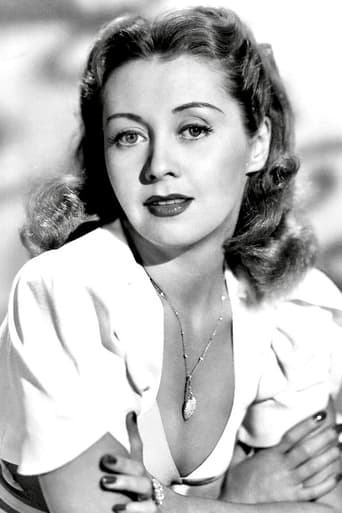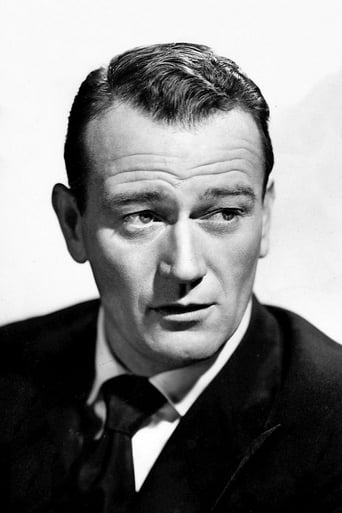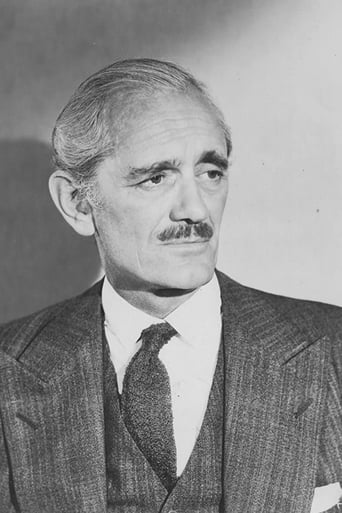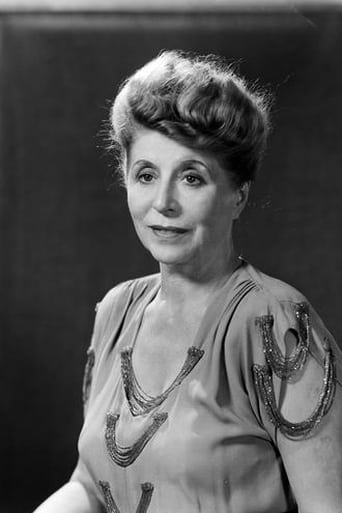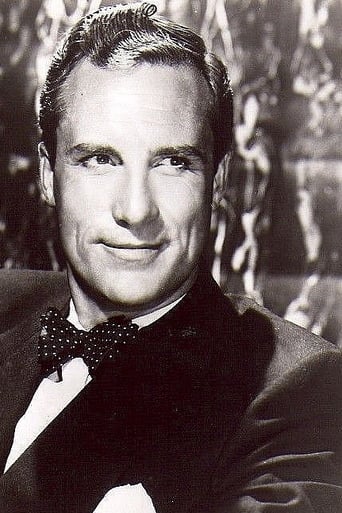SpuffyWeb
Sadly Over-hyped
Actuakers
One of my all time favorites.
ShangLuda
Admirable film.
Marva
It is an exhilarating, distressing, funny and profound film, with one of the more memorable film scores in years,
gcmarshall
This movie was made in 1942. It is one of several movies that Joan Blondell, a very popular actress of the time, made in that year.I think when you look at a movie of this type, which was an average, run-of-the-mill movie of the time, what you get out of it is a snapshot of what viewers of the day expected to see in a movie. While this movie is a period piece (looks like it takes place in 1875-1885) it says much about 1942-- what people then would view as acceptable viewpoints for the script to put forth.I think there are two major themes in this movie that can give today's viewers an historical insight as they are entertained --the attitudes that were allowed to be expressed in that day and time about black Americans, and the Lost Cause mythology. While one character expresses the thought "Abraham Lincoln done emancipated and proclamated me", you can't tell it from this show. A black female leading character (a character actress with a lot of talent) is consistently spoken to with utter disregard for her feelings or human rights. She is threatened with banishment to Africa, is required to be seated in a segregated balcony with other black Americans, and is condescendingly referred to as "Auntie" by a white policeman, a sobriquet to which she responds in a small, frightened voice. An elderly black actor, portraying a coachman and major domo combination, epitomizes the myth of the faithful black retainer, happy to be subservient and defined by white social mores, long after Emancipation. Black residents of the Alderson Plantation are portrayed as lazy do-nothings. This group of people, in the party scene, are forced to enact the sham of being happy, joyful folk singing spirituals and swilling corn liquor on the porches of their shacks. The black actors in this movie mug, roll their eyes, and in general follow the degrading norms set for blacks in the entertainment world of 1942, which was dictated by black-face comedy-- an odious farcial comedy common in the south, which was acted out by white men.An arresting black character in this movie is Joe, the Conjure man. Joe is an emaciated elderly black soothsayer, who seems frail, yet filled with a power not of his own making, who colors each scene, in which he sings his discordant rhymes, with foreboding. The belief in conjuration, which might be simply defined as the practice of gaining ascendancy over one's adversaries or those one wishes to sway through tricks or spells placed upon them, was brought to American shores from Afica. American authors James Chestnutt and Zora Neale Hurston deal with conjure themes in some of their stories.The Lost Cause myth forms the framework upon which this story is arranged. The movie Gone with the Wind was released 6 years prior to Lady for a Night. The plantation in ruins, with a formerly noble family now fallen on hard times, eking out lives of genteel poverty due to their Confederate sympathies within its crumbling walls, is a scene familiar to anyone who has viewed Gone With the Wind. The Shadows, the name of the Alderson's ancestral home, is about to fall under the auctioneer's hammer for back taxes, another steal from GWTW. That the South's defeat was the nobler cause was a theme that entered American thought and literature in the early 20th century, as Civil War veterans began to pass away in large numbers, and as their deeds became the stuff of legend. It is interesting to note that this movie was for general release to American audiences, so even the descendants of the soldiers of the Grand Army of the Republic were acquiescent to this view of the South.I always enjoy scenes reminiscent of vaudeville in movies of the 1930's and 1940's. The scenes set in Jenny Blake's gambling barge (these probably did exist, I haven't researched it) would be familiar to those who had attended vaudeville shows-- joke telling, elaborate musical numbers, dancing girls, and barbershop style male singing.The costumes in this movie are absolutely first rate, and as a seamstress, I enjoy them each time I watch this movie. Dresses of the late 19th century (as indeed, those of the 1930's) frequently had color combinations, styles, and trimmings that today would seem very garish. Even though the movie is in black and white, the costumes give off an aura as though in color. Whoever designed the costumes, particularly those of Jenny Blake, had an eye for period detail, and access to superb seamstresses. The small bustles are correctly made, the elegant trains drape and move perfectly, and the fit is sublime. All the costumes have been exquisitely fitted to enhance the character-- Aunt Julia, the sinister character of the story, has a perfectly devilish black costume. Jenny Blake's costumes had to hold up to a great deal of active movement and yet they always appear graceful and feminine.I find it interesting that John Wayne's character-- a behind the scenes political wheeler/dealer, manipulated the affairs of his little empire from his position as the owner of a gambling house. In "The Glass Key", a short story by Dashiell Hammet written in the 1920's, the political power behind the throne wheeler/dealer wields his influence from his gambling house/speakeasy. This must be historical.Well, this has gotten long. I wanted to let other people know why I like this movie. We can get glimpses of what the people of yesterday were like-- what they approved of, how they related to other people, what made them laugh at the theater, through watching old movies.
Spikeopath
Jenny Blake runs the gambling boat Memphis Belle, but she yearns to be accepted by the high society. Casting off her love interest Jack Morgan, Jenny accepts an offer of marriage from non compos mentis plantation owner Alan Aldredge. Naturally the rest of the Aldredge family are not too thrilled to have someone of Jenny's standing in their family, with one of them in particular prepared to do anything to get rid of Jenny.Serviceable time filler is a phrase that could have been invented for this particular film. It's neither good or bad, and it's competently put together from both sides of the camera. Tho primarily a romantic drama, there is often humour within the script, most often when John Wayne {Jack} and Joan Blondell {Jenny} are sharing the screen together. Tho for sure not during the big finale court room pay off!! Here is the main problem on why Lady for a Night really falls down, it's confused as to what it should be. It's joviality is nice and endearing, but when the theme of class snobbery is coming to the fore, light relief is neither warranted or required. In fact the shift in tone for the rushed final quarter takes all by surprise. We lurch from grinning with mirth one second to a serious drama the next, and it's all a bit off putting at a time when the nastiness of the story deserves our full attention.The cast are a mixed bunch. Blondell is effervescent and attractive, and Wayne, in a straight uncomplicated role, does what is needed with such minimalistic material. Blanche Yurka does a nice line in evil old bat routine {paging Mrs Danvers, paging Mrs Danvers} and Hattie Noel dons the maid apron and gives it the Hattie McDaniel treatment. The rest are barely worth a mention, with Ray Middleton & Philip Merivale particularly out of their depth. Some nice tunes such as "Ta-ra-ra Boom-der-é" and "Has Anybody Seen My Man?" lighten up proceedings {again is this a dark film or not?} and the costume side of production is well worth observation. But it all ends up being a collage of tones, with neither one or the other breaking out to let the good side of the film truly break free of the confusion, shame that. 4/10
bkoganbing
Lady for a Night is a Joan Blondell film with John Wayne as her leading man. It is not a John Wayne picture, I repeat not a John Wayne picture. If you're looking for fights, or shootouts, this ain't the film for you to see. The Duke plays a part that would normally go to an actor like Ray Milland. He's the political boss of Memphis and the old Southern gentry of the town, tow his line. John Wayne even has a bodyguard, Leonid Kinsky. Who'd have ever thunk that.Wayne and Blondell are partners in a riverboat gambling ship. Wayne would like to make it a matrimonial partnership. But Blondell, who's a girl from the wrong side of the tracks wants some respectability as well as money. When Ray Middleton gambles away the title to the old Alderson family estate, Blondell offers to marry him to save the good gentry from being thrown out on their duffs. It's a marriage she has soon cause to regret.Blondell sings a nice number entitled Up In a Balloon on the riverboat stage and I bet she was looking around for Busby Berkeley. Kind of strange to see her singing without the splashy Warner Brothers production around her. But her performance was effective, the best in the film.What struck me so curious was that they seem to have grabbed off characters from other films and tossed them here. Hattie Noel plays Blondell's black maid and it's a total ripoff of Hattie McDaniel from Gone With the Wind. Edith Barrett and Blanche Yurka play Middleton's aunts, Barrett good, Yurka evil. Edith Barrett copied Patricia Collinge as Birdie Bagtry Hubbard from The Little Foxes and Yurka is another Mrs. Danvers from Rebecca.Still it does mix well and while it's not a great film, Lady for a Night is a passably decent one, though it's far from the usual Duke.
bob the moo
Jenny Blake is the owner of a river boat for gambling, dancing, drinking and women – suffice to say that she is not really accepted into polite society in the way she always dreamed of being. So when she is voted the Queen of the Mardi Gras, Jenny is overjoyed, only to be upset when she learns that her business partner Jack Morgan helped her by rigging the whole contest. So whenever drunken plantation owner Alan Alderson gets into serious debt with the gambling boat Jenny proposes to wipe out the debts in return for his hand in marriage and the fast track into high class society. However, not all those in that circle are that happy with her sudden rise above her station, especially Aunt Julia who is determined to get rid of her by any means necessary.I cannot remember why I decided to tape this film and, now that I've watched it I still have no idea – although I'm sure it was down to some sort of obsessive compulsion than any great attraction of the film! Anyway, the plot is a simple one of social climbing where Jenny tries to get away from her own level only to find that those above her don't want her to climb. You pretty much know where it is going from the first 20 minutes, although the plot still manages to be unlikely as well as predictable. It is nothing special but it isn't awful or annoying – it is just rather bland. The drama side is plodding and obvious, while the comedy is laugh free and relies more on energy than anything else. The couple of songs act well as distraction and filler but they are only OK. These produce a film that just looks to keep you happy for about 90 minutes but not do anything special during that time or have any impact past the end credits.The characters are very simply painted in the script and are simply delivered by the cast. Blondell is OK but she is hardly 'trash' is she and we never doubt what will happen to her ideals by the end. Wayne is a secondary character who's only purpose is to be a decent man who turns up every 10 minutes to help Blondell in some way. The support cast of Aldersons are very much join the dots and the actors are only average. There are a large amount of black characters, with two main ones in comedy roles – modern audiences may find them hard to watch because they are ethnic stereotypes that are overplayed for comedic effect. At first I was a bit taken aback by this (although I know it is of its time) but then I thought about modern movies that do the same thing (albeit with a cooler, hip hop, ebonics stereotype) and wondering if, in 50 years, that these films would be viewed as rather racist. Anyway, it was interesting to see the stereotypes but I must admit to have been a bit caught off guard when John Wayne threatened to send Hattie Noel 'back to Africa'!Overall this is an instantly forgettable movie that only wants to keep you semi-entertained for the running time without doing anything special or making a lasting impression. Maybe it is the presence of John Wayne that has meant it still pops up on television with some regularity because other than that I really have no clue as to why it has not been just forgotten by time.
